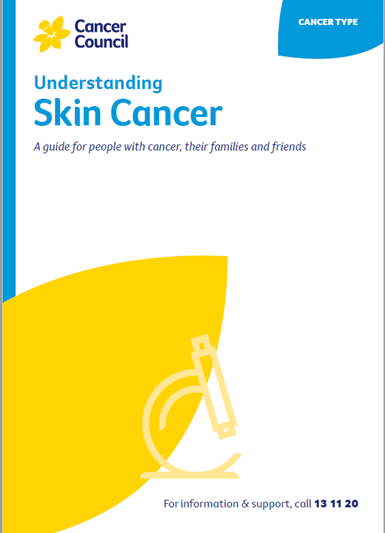Be SunSmart
Skin cancer is the most common cancer in Australia and one of the most preventable.
Learn more about:
Reducing your risk
Most skin cancers are caused by exposure to the sun’s ultraviolet (UV) radiation. Using sun protection will reduce your risk of skin cancer. It’s also important to check your skin regularly and to ask your doctor how often you need a full skin check.
UV radiation from the sun causes skin cancer, but it is also the best source of vitamin D, which is needed for healthy bones. Most people get enough vitamin D throughout the day – even when using sun protection.
When the UV Index is 3 or above, you may need only a few minutes outdoors on most days to get enough vitamin D (depending on your skin colour, where you live and the time of year).
The body can absorb only a set amount of vitamin D at a time. Getting more sun won’t always increase your vitamin D levels, but it will increase your skin cancer risk.
People who’ve had skin cancer have a higher risk of developing more skin cancers. Talk to your doctor about how to protect your skin from the sun, check for new skin cancers, and maintain your vitamin D levels.
How to protect your skin
The UV Index shows the intensity of the sun’s UV radiation. An index of 3 or above means that UV levels are high enough to damage unprotected skin, so sun protection is recommended. Use a combination of the following measures to protect your skin. Make sun protection a part of your everyday routine.
Slip on clothingWear clothing that covers your shoulders, neck, arms, legs and body. Choose fabric with a tight weave or with a high ultraviolet protection factor (UPF) rating and darker fabrics where possible. |
|
Slop on sunscreenUse an SPF 50 or SPF 50+ broad-spectrum, water-resistant sunscreen. Apply 20 minutes before going out and reapply every two hours, or after swimming, sweating or any activity that causes you to rub it off. For an adult, the recommended amount is 1 teaspoon for each arm, each leg, front of body, back of body, and the face, neck and ears – a total of 7 teaspoons of sunscreen for one full body application. |
|
Slap on a hatWear a hat that shades your face, neck and ears. This includes legionnaire, broad-brimmed and bucket hats. Check to make sure the hat meets the Australian Standard. Choose fabric with a close weave that doesn’t let the light through. Baseball caps and sun visors do not offer enough protection. |
|
Slide on sunglassesProtect your eyes with sunglasses that meet the Australian Standard. Wraparound styles are best. Sunglasses should be worn all year round to protect both the eyes and the delicate skin around the eyes. |
|
Seek shadeUse shade from trees, umbrellas, buildings or any type of canopy. UV radiation is reflective and can bounce off surfaces, such as concrete, water, sand and snow, so shade should never be the only form of sun protection used. If you can see the sky through the shade, even if the direct sun is blocked, the shades will not completely protect you from UV. |
|
Check daily sun protection timesEach day, use the free SunSmart Global UV app to check the recommended sun protection times in your area. The times will vary according to where you live and the time of year. You can also find sun protection times at the Bureau of Meteorology, on the BOM Weather app, or in the weather section of daily newspapers. |
|
Sensitive skin after treatmentSome cancer treatments may make your skin more sensitive to the sun, causing it to burn or be damaged by the sun more quickly or easily than before. Ask your treatment team if this applies to you, and if there are any extra things you should do to protect your skin or you need more frequent skin checks. |
→ READ MORE: Be a healthy body weight
Podcast for people affected by cancer
Listen now
Prof Michael Jefford, Medical Oncologist and Director, Australian Cancer Survivorship Centre, Peter MacCallum Cancer Centre, VIC; Lucy Bailey, Nurse Counsellor, Cancer Council Queensland; Philip Bullas, Consumer; Dr Kate Gunn, Clinical Psychologist and Senior Research Fellow, Department of Rural Health, University of South Australia, SA; Rosemerry Hodgkin, 13 11 20 Consultant, Cancer Council WA; Prof David Joske, Clinical Haematologist, Sir Charles Gairdner Hospital and Clinical Professor of Medicine, The University of Western Australia, WA; Kim Kerin-Ayres, Clinical Nurse Consultant, Cancer Survivorship, Concord Hospital, NSW; Sally Littlewood, Physiotherapist, Seymour Health, VIC; Georgina Lohse, Social Worker, GV Health, VIC; Melanie Moore, Exercise Physiologist and Clinical Supervisor, University of Canberra Cancer Wellness Clinic, ACT; June Savva, Senior Clinician Dietitian, Nutrition and Dietetics, Monash Cancer Centre, Monash Health, VIC; Dr Elysia Thornton-Benko, Specialist General Practitioner and Research Fellow, University of New South Wales, NSW; Prof Janette Vardy, Medical Oncologist, Concord Cancer Centre and Professor of Cancer Medicine, The University of Sydney, NSW; Lyndell Wills, Consumer.
View the Cancer Council NSW editorial policy.
View all publications or call 13 11 20 for free printed copies.
